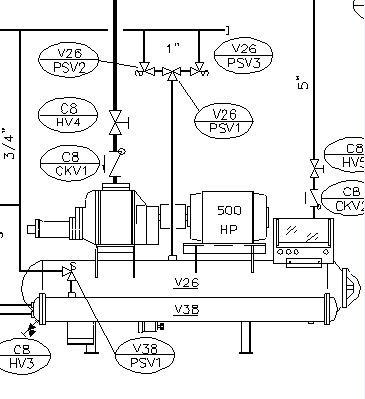Piping and instrumentation diagrams (P&IDs) are designed to communicate a general layout of your facility’s process system piping, valves and equipment. These diagrams are the foundation for every Process Safety Management (PSM) program.
The Occupational Safety and Health Administration (OSHA) states that complete and accurate written information concerning process chemicals, process technology, and process equipment is essential to an effective PSM Program, and P&IDs can be used to comply with these requirements.
Ensure that your P&IDs meet the necessary PSM requirements by:
- Documenting all components of the process, including valves and piping, even if the component or piping is isolated with no gas or liquid in the lines. If the gas or liquid can be introduced by opening a valve, or series of valves, it must be considered part of the process.
- Including detailed piping information, from pipe size and service to flow direction on all piping lines. Piping that flows to / from other P&ID sheets should be detailed with continuation designations.
- Uniquely identifying each component and valve in the process, including evaporators, compressors, condensers, pressure vessels and pumps, with a name or number tag. Also identify all pressure gauges, transmitters, level controllers, and pressure switches.
- Making sure your layout mirrors your equipment in the machine room. This will allow easy recognition by individuals who may not be familiar with the facility.
- Creating a valve legend, a list of valves in the process organized by component, number, size, type, and purpose. The P&ID page on which the valve is located is also useful.
- Adding an equipment schedule page identifying detailed, equipment-specific manufacturer information for all components. Control groups should be shown in detail along with the evaporators they serve.
- Considering professionally drawn P&IDs. While there is no requirement for this, it is highly recommended for the implementation and maintenance of an effective PSM program.
- Updating P&IDs as Managements of Change (MOC) are generated due to the replacement of components or modifications of the process system.
- Using color on the piping to easily identify the service or state of the ammonia within the pipe. For example, red can indicate services that are considered hot, such as a high stage discharge or hot gas defrost. Cold services, such as a recirculated liquid or suction, would be colored blue.
- Comparing the P&IDs to your actual SOPs and equipment, especially if an outside contractor has prepared them to ensure accuracy.



